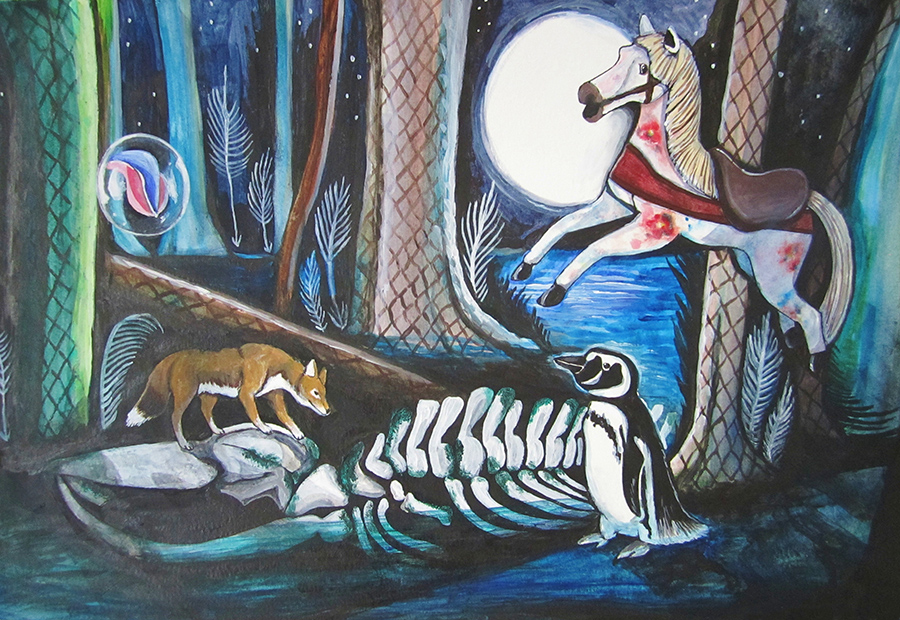What do forests do? They never go to bed early

What do forests do? They never go to bed early. 2017. Watercolour, acrylic, and markers on paper, 10 x 15 in.
Image Description
A large moon illuminates the lepidodendrons and horsetail ferns of a Carboniferous forest, the surreal origin of most of the world’s fossil fuels and the swamp where a disorderly mixture of temporalities accumulates. A Falkland Islands “wolf,” a canid observed by Darwin and driven to extinction by the late nineteenth century, inspects the partially-submerged skeleton of a disproportionately small whale, climbing and sniffing the skull. Paradoxically, a creature that has not yet arrived lies fossilized in the biomass of the ancient past. In the immediate foreground, a Magellanic penguin, a member of another species encountered on the second Beagle voyage, surveys the scene. Above, a pink and blue cat’s-eye marble and floral Victorian rocking horse hover spectrally among the scale trees, connecting the amorphous, protoplasmic times of childhood, prehistory, and the night.
1. The title is a quotation from Max Ernst’s “Les Mystères de la forêt,” published in Minotaure 5 (May 12, 1934).
